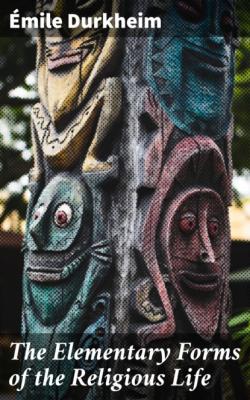ТОП просматриваемых книг сайта:
The Elementary Forms of the Religious Life. Durkheim Émile
Читать онлайн.Название The Elementary Forms of the Religious Life
Год выпуска 0
isbn 4057664097941
Автор произведения Durkheim Émile
Жанр Документальная литература
Издательство Bookwire
Now the nurtunja and the waninga, which figure in a multitude of important rites, are the object of a religious respect quite like that inspired by the churinga. The process of their manufacture and erection is conducted with the greatest solemnity. Fixed in the earth, or carried by an officiant, they mark the central point of the ceremony: it is about them that the dances take place and the rites are performed. In the course of the initiation, the novice is led to the foot of a nurtunja erected for the occasion. Someone says to him, "There is the nurtunja of your father; many young men have already been made by it." After that, the initiate must kiss the nurtunja.[348] By this kiss, he enters into relations with the religious principle which resides there; it is a veritable communion which should give the young man the force required to support the terrible operation of sub-incision.[349] The nurtunja also plays a considerable rôle in the mythology of these societies. The myths relate that in the fabulous times of the great ancestors, the territory of the tribe was overrun in every direction by companies composed exclusively of individuals of the same totem.[350] Each of these troops had a nurtunja with it. When it stopped to camp, before scattering to hunt, the members fixed their nurtunja in the ground, from the top of which their churinga was suspended.[351] That is equivalent to saying that they confided the most precious things they had to it. It was at the same time a sort of standard which served as a rallying-centre for the group. One cannot fail to be struck by the analogies between the nurtunja and the sacred post of the Omaha.[352]
Now its sacred character can come from only one cause: that is that it represents the totem materially. The vertical lines or rings of down which cover it, and even the cords of different colours which fasten the arms of the waninga to the central axis, are not arranged arbitrarily, according to the taste of the makers; they must conform to a type strictly determined by tradition which, in the minds of the natives, represents the totem.[353] Here we cannot ask, as we did in the case of the churinga, whether the veneration accorded to this instrument of the cult is not merely the reflex of that inspired by the ancestors; for it is a rule that each nurtunja and each waninga last only during the ceremony where they are used. They are made all over again every time that it is necessary, and when the rite is once accomplished, they are stripped of their ornaments and the elements out of which they are made are scattered.[354] They are nothing more than images—and temporary images at that—of the totem, and consequently it is on this ground, and on this ground alone, that they play a religious rôle.
So the churinga, the nurtunja and the waninga owe their religious nature solely to the fact that they bear the totemic emblem. It is the emblem that is sacred. It keeps this character, no matter where it may be represented. Sometimes it is painted upon rocks; these paintings are called churinga ilkinia, sacred drawings.[355] The decorations with which the officiants and assistants at the religious ceremonies adorn themselves have the same name: women and children may not see them.[356] In the course of certain rites, the totem is drawn upon the ground. The way in which this is done bears witness to the sentiments inspired by this design, and the high value attributed to it; it is traced upon a place that has been previously sprinkled, and saturated with human blood,[357] and we shall presently see that the blood is in itself a sacred liquid, serving for pious uses only. When the design has been made, the faithful remain seated on the ground before it, in an attitude of the purest devotion.[358] If we give the word a sense corresponding to the mentality of the primitive, we may say that they adore it. This enables us to understand how the totemic blazon has remained something very precious for the Indians of North America: it is always surrounded with a sort of religious halo.
Конец ознакомительного фрагмента.
Текст предоставлен ООО «ЛитРес».
Прочитайте эту книгу целиком, купив полную легальную версию на ЛитРес.
Безопасно оплатить книгу можно банковской картой Visa, MasterCard, Maestro, со счета мобильного телефона, с платежного терминала, в салоне МТС или Связной, через PayPal, WebMoney, Яндекс.Деньги, QIWI Кошелек, бонусными картами или другим удобным Вам способом.

